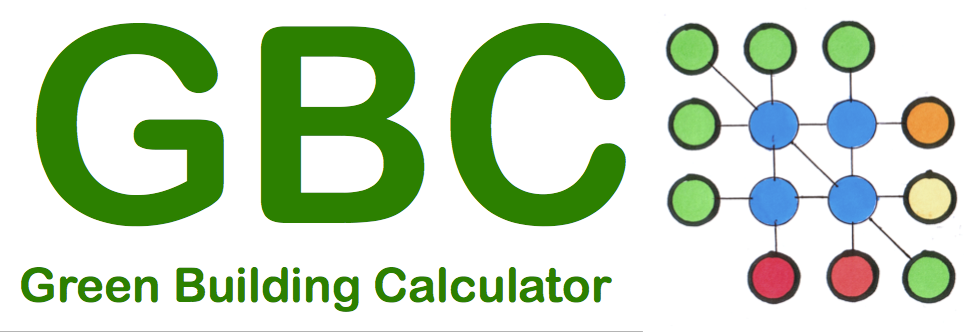CIOB Sustainability Awards 2022
About

Celebrating cultural shift
The construction industry has started to take steps to become more sustainable by looking at new methods to cut down on waste as well as innovating new products that can help improve many facets of the building process.
Our industry has an important role to play in Sustainability, and it is our responsibility to recognise our contribution towards creating a fair and sustainable future for people no matter where they are.
The CIOB Sustainability Award, introduced to the CIOB Awards this year, celebrates those who have made their mark on sustainability within the built environment. Our winner will have demonstrated their understanding of sustainable development whilst taking an active role in supporting communities.
To enter, please complete the application form.
The extended submission deadline for this award is 10 June 2022.
The award is open to all UK-based candidates working within the built environment.
The submitted evidence should be during the period from January – December 2021.
The Independent Testimonial must come from someone outside of the candidate’s organisation with direct knowledge or experience of working with the candidate.
You may nominate yourself for this award.
What we’re looking for
Judges will be looking for:
- Provide workplace evidence to demonstrate your awareness and involvement in good practice in the operation of sustainable construction.
- Use examples to demonstrate your understanding of sustainable development, including other sustainable communities, any indirect economic support provided to communities e.g. supporting local charities, sustainability training to suppliers, supporting diversity in procurement etc, energy management and environmental impact; and include environmental legislation and other controls appropriate to sustainable construction development and your role.
- Why do you stand out from the crowd in the circular economy (CE) and other key goals in construction sustainability, including direct occupational and customer health and safety.
GBC Submission
Tasked with educating an architectural student cohort on building performance and impacts:
- I developed 2 whole-building calculators
- Energy and Carbon: 1 In-use, 2 Embodied
- For consistency of calculation methods (avoiding students MS Excel inexperience)
- To allow direct comparisons between each student’s studio designs
- Added: Inventory of Carbon & Energy Version 1 & 2 & Fuel Carbon factor datasets
- The calculators required the students to detail their building to populate the calculators.
- I discovered 5th year full-time students had never detailed a building so far
- They showed 50 mm of thermal insulation,
- Presumably prompted by historic text books
- To meet legal-minimum regulations, 200 – 300 mm of insulation is essential
- I had to introduce a table to assemble all insulation materials, formats, densities, k values and display thickness needed in each building element
- Moreover I introduced U value, airtightness, embodied carbon, primary energy, etc. requirements from:
- Legal minimum UK and any national building regulations
- Form Factor calculator which sets much more stringent targets than regulations
- National and International design standards: AECB, Carbon Lite, CLR, Passivhaus, EnerPHit, etc.
- Other campaign targets: LETI, ACAN, RIBA, TfL, etc.
- Students could now instantaneously switch between them to investigate alternative scenarios.
- Checks and confirms U values meet targets or warns if not
- I was asked to support a student in an architectural competition requiring carbon datasets,
- Just prior to COVID I was informed,
- To a man all part-time students took the calculators back to their offices to use on live projects,
- An opportunity to influence architectural community
- Lockdowns and lack of work-commitments gave me the opportunity to develop and refine the calculators as Green Building Calculator GBCV1 launched June 2020
- I was approached by Sustainable Traditional Building Alliance
- To carryout bespoke developments for retrofit
- It was presented to retrofit arena at Futurebuild 2022
- This is now being developed into an online app
- During lockdowns I went on to merge two calculators as GBCV2 launched in March-April 2022
- By use of a fully-integrated multi-functional calculator users will be able to:
- Design a building and robustly analyse its performance and impacts
- All within a single application, that will become an App in due course.
- Green Building Calculator GBCV2:
- Building Information Modeling without a 3D Model (will add later)
- For micro-SME practices not needing BIM 3D CAD nor doing government-funded work
- MS Excel-based, open-book, multi-functional design-decision tool and calculator:
- GBC follows a Fabric-first approach addressing:
- Form factor Uvalues, Design Standard, Campaigns or Regulations
- Choose or switch between Uvalues and other targets:
- Thermal Insulation materials and products
- Matching their varying properties to their specific location/application
- Embodied Energy, Embodied, Sequestered and Biogenic Carbon
- ICE database updated to version 3
- Fuel costs allows engagement in initial, running and whole life costs
- Fuel carbon factors allows comparison of embodied, in-use and whole-life carbon
- Quantify user’s building(s), floor areas, heights, number of floors, temperatures, hours of use
- Users choose
- Choose from 12 windows, glazing, doors, rooflights, etc.
- Choose from 39 readymade elemental assemblies
- With all components in competent order
- Which components or layers apply to user’s project
- Replace components with materials or products and GBC populates data-cells for calculations
- Results: Embodied energy, embodied, sequestered and biogenic-carbon
- Summary sheets:
- Component, Element and Whole-building losses (in-use energy)
- % of envelop v % of heat losses
- Emphasizes disproportionate heat losses to invite review of specification choices, especially of glazing
- Choose fuel to get: In-use energy, carbon and running-costs
- Total Build Costs
- Component, Element and Whole-building losses (in-use energy)
- GBCV2 attempts to address other issues including:
- Poor cost planning, ‘value-engineering’, cost-cutting, substitution
- The bane of our industry and cause of ‘performance-gaps’ and incompetent buildings
- Built-in bill of quantities: for specifier community without a QS
- Materials, Products, Accessories, Labour, Quantities, overheads and Costs calculator
- Users can do their own advance detailed cost-planning
- From manufacturer, supplier’s website or quotes
- Installer quotation collating, cost control and tracking final build-costs
- Constructors can complete pricings and submit auto-totaled tenders, all in one place
- With cost and carbon data, in one place intelligent value-engineering is possible
- GBCV2 Scope Includes and supports many design and specification disciplines:
- Building fabric
- Sub- and super-structure
- Services
- Finishes & Furnishings
- Landscape
- Infrastructure
- GBCV2 was promoted to:
- My Mailchimp email newsletter communities
- Futurebuild exhibition in March 2022 as a pre-launch promotion
- During underground strikes many exhibitors visited each other’s stands
- I collected 350 new visitor and exhibitor contacts who were interested in joining forces to build something bigger, better, faster
- Some with products datasets, cost data, labour carbon data
- Others wanting to develop a CAD-BIM interface App
- I heard a lot of ideas that GBC can address in future developments
- When I get a gap in workload I will call zoom meetings
- To form User, Steering and Development groups
- I plan to build a community around the calculator to encourage participation in its refinement and development according to user needs and sharing project datasets
- I am in active discussions with Firstplanit to merge our applications
- CPD audiences via Zoom webinars, so far:
- Sustainable Traditional Buildings Alliance (Retrofit)
- Chartered Institute of Architectural Technicians x2
- Women in Sustainable Rail (Civil Engineering Infrastructure)
- The Green Register of Construction Professionals (Green Building)
- Sustainability Consultants (BREEAM, LEED)
- University Students:
- Architecture
- Civil Engineers
- GBCV2 and all future versions will be available:
- Choose: student, graduate, university, self-builders, small, medium or larger businesses
- Choose: one off payment or annual subscription
- At very low cost to encourage as many individuals and businesses to join in
- Prices from £4.88 to £98.88
GBCV3 to V35 to follow
Judges will look for:
- Provide workplace evidence to demonstrate your awareness and involvement in good practice in the operation of sustainable constructionUse examples to demonstrate your understanding of sustainable development, including other sustainable communities, any indirect economic support provided to communities
- e.g. supporting local charities, sustainability training to suppliers, supporting diversity in procurement etc. energy management and environmental impact; and include environmental legislation and other controls appropriate to sustainable construction development and your role
- Why do you stand out from the crowd in the circular economy (CE) and other key goals in construction sustainability, including direct occupational and customer health and safety?
Independent Testimonial
- How has this candidate made their mark on sustainability within the built environment?
- How have they taken the correct action(s) to produce change and enable positive progress towards implementing what is stated in the criteria above?
- How have they shown professionalism, integrity, excellence and respect in their role?
- Narrative is required from independent source(s) who have direct experience of collaborative working with the client.
Independent Testimonial Submission
I first encountered Brian Murphy and the GBC spreadsheet at university in my masters program in 2016 and was quite impressed with it. Brian was able to show us very clearly the impact of our design solutions by using the calculator. More importantly with my 16 years of work experience at the time I saw what it could provide, a direct antidote to greenwashing. There had been several industry attempts to move towards a more responsible process for buildings and their environment in the last 20 years. In my experience, these processes tended to focus on ‘add-ons’ (bat boxes, bicycle parking, green roofs) to achieve a sustainability standard. There have always been ways to shortcut around these and the building industry has been typically reluctant to move away from the ‘the way they have always done it’.
Brian’s passion for a more accurate and universal criteria was clear from his first lecture and has not waned in the many discussions I have had with him. I have been working in the private residential market for the last 12 years and typically these projects have small design teams and discussions about what is the best solutions are, become a debate between the contractor and the architect and often the client choses to go with the contractor’s suggestion. The GBC provides a much more robust argument with which to convince the client and the contractor. On a recent project the client was happy to follow the guidance from the GBC, the main contractor was mostly supportive, but the sub-contractors continually challenged our decisions and at every opportunity pointed out to the client that the amount of insulation was not necessary, or the overhang was excessive. The GBC gave the client the confidence to ignore the noise coming from them.
Once the project data is in the GBC you can really examine the design, carbon and cost implications between different types of insulation, or heating systems for example. The GBC openly identifies where the information is coming from how it’s being used so as to really make the calculator transparent. This transparency removes bias and takes a major step towards providing an accurate tool with which to assess a project and ultimately help architects, designers, project managers and clients deliver a more sustainable built environment.
- Architect: Bryan Strom MArch2, AECB
- Practice: SLAB Architects
- ARB Registration: 098603H
- Mob: 07811 513925
- Email: b.strom@slabarchitects.com
- www.slabarchitects.com
© GBE GBC GBL NGS ASWS Brian Murphy aka BrianSpecMan **
10th June 2022 – 11th June 2022

